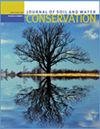提高生态系统服务付费(PES)在水资源方面有效性的替代方案
IF 2.6
4区 农林科学
Q2 ECOLOGY
引用次数: 0
摘要
生态系统服务 (ES) 是生态系统为社会提供的益处。这些服务为维持生命提供了必要条件,并影响人类福祉的方方面面,包括提供基本需求、健康以及选择和行动自由(MEA,2005 年)。生态系统服务包括自然对人类的所有贡献,这些贡献根据环境和替代品的存在而具有相对性(国际生物多样性和生态系统服务政府间科学政策平台,2019 年)。生态系统退化会危及这些服务的可持续提供。在此背景下,生态系统服务付费计划(PES)作为一种政策工具应运而生,通过对改善、维持或最大限度提供生态系统服务的行动进行经济激励,促进有利于环境的土地利用(Kim 等,2016 年)。自 20 世纪 90 年代末以来,生态系统服务补偿方案已在全球推广,并采用了不同的支付类型、规模和保护目标(Salzmann 等,2018 年)。一些受激励的活动包括森林保护、流域保护、生物多样性保护以及碳(C)固存和储存。大多数生态系统服务补偿需要改进的一个核心领域是需要对生态系统服务进行测量。由于定期测量和监测生态系统服务的技术难度和高成本,大多数生态系统服务补偿只监测根据生态系统服务补偿合同授予的土地用途和做法。总体而言,生态系统服务补偿的前提是,通过激励森林保护和非林区再造林,可维持或增加社会所关心的生态系统服务流量。然而,这种假定的相关性可能是非线性的,在时间和空间上是不同步的,在景观尺度上可能涉及生态系统服务之间的权衡,而且在最坏的情况下,生态系统服务补偿可能会导致......本文章由计算机程序翻译,如有差异,请以英文原文为准。
Alternatives for improving Payment for Ecosystem Services (PES) effectiveness on water resources
Ecosystem services (ES) are the benefits ecosystems provide to society. These services grant the necessary conditions for sustaining life and influence human well-being in all dimensions, including providing basic needs, health, and freedom of choice and action (MEA 2005). ES include all contributions of nature to humans, and these are relative according to the context and the existence of alternatives (IPBES 2019). Ecosystem degradation jeopardizes the sustainable provision of these services. In this context, Payment for Ecosystem Services (PES) schemes arose as policy instruments that promote pro-environmental land use through financial incentives for actions that improve, maintain, or maximize the provision of ES (Kim et al. 2016). Since the late 1990s, PES schemes have spread worldwide, adopting different payment types, scales, and conservation objectives (Salzmann et al. 2018). Some incentivized activities are forest conservation, watershed protection, biodiversity conservation, and carbon (C) sequestration and storage. One central area for improvement of most PES is their need for ES measurement. Due to the technical difficulty and high cost of measuring and monitoring ES periodically, most PES only monitor land uses and practices granted under PES contracts. Overall, PES have been based on the premise that, by incentivizing forest conservation and reforestation of nonforest areas, the flow of ES of interest to society is maintained or increased. However, this presumed correlation may be nonlinear, asynchronous in time and space, could involve trade-offs among ES at the landscape scale, and, in the worst-case scenario, the …
求助全文
通过发布文献求助,成功后即可免费获取论文全文。
去求助
来源期刊
CiteScore
4.10
自引率
2.60%
发文量
0
审稿时长
3.3 months
期刊介绍:
The Journal of Soil and Water Conservation (JSWC) is a multidisciplinary journal of natural resource conservation research, practice, policy, and perspectives. The journal has two sections: the A Section containing various departments and features, and the Research Section containing peer-reviewed research papers.

 求助内容:
求助内容: 应助结果提醒方式:
应助结果提醒方式:


